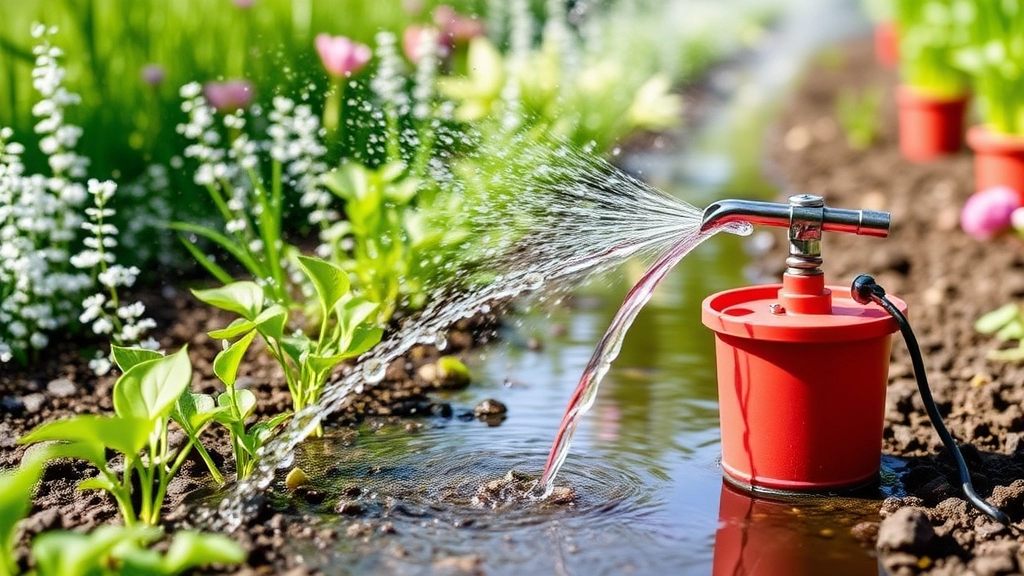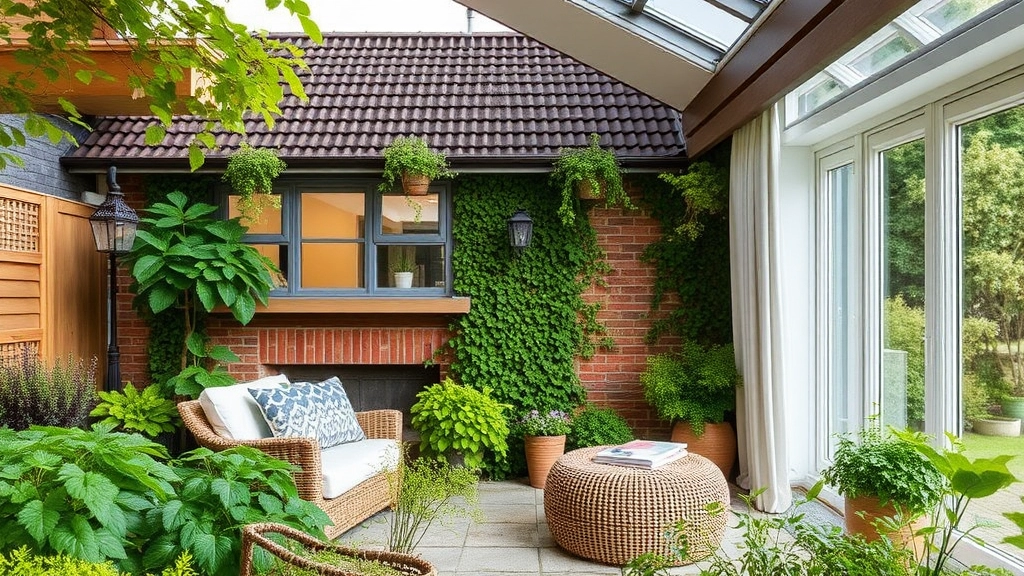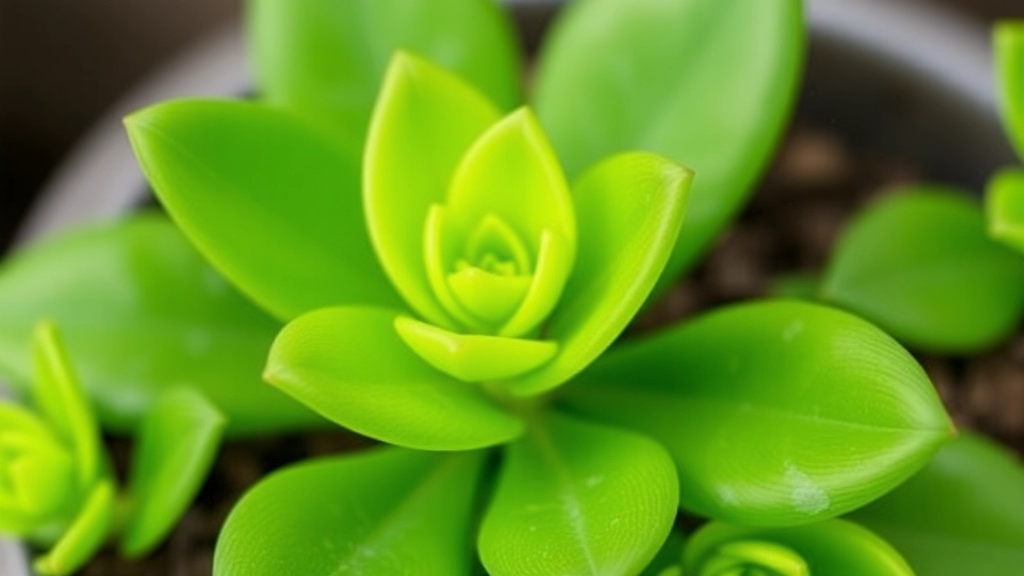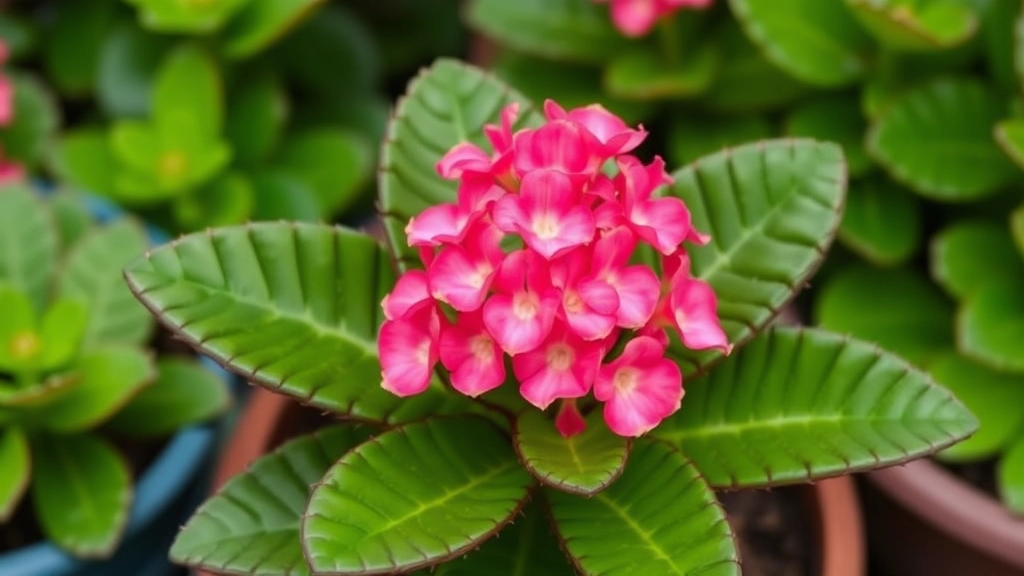Mastering Kalanchoe Care in the UK
Looking to master the care of Kalanchoe house plants in the UK? You’re in the right place. These vibrant succulents can thrive indoors with the right conditions. Let’s dive into how to provide optimal light, manage watering, select the best soil, and maintain the perfect temperature and humidity for your Kalanchoe plants.
Essential Care Tips
Firstly, ensure your Kalanchoe receives plenty of indirect sunlight. Overwatering is a common mistake, so let the soil dry out between waterings. Choose a well-draining soil mix to keep roots healthy. UK homes can be chilly, so keep your plant in a warm spot, away from drafts. With these tips, your Kalanchoe will flourish year-round.
Optimal Light Conditions for Kalanchoe Indoors
Are you struggling to get your Kalanchoe to thrive indoors? One of the most crucial factors for its success is light.
Kalanchoe plants flourish in bright, indirect sunlight. Here’s how to ensure your plant gets the optimal light it needs:
- Ideal Location: Place your Kalanchoe near a south-facing window. This position provides ample light without the harsh direct sun that can scorch the leaves.
- Duration: Aim for at least 6 hours of light daily. If natural light is limited, consider using a grow light to supplement.
- Signs of Insufficient Light: If your Kalanchoe’s leaves become leggy or the blooms are sparse, it may not be receiving enough light. For more detailed care tips, check out this expert guide on caring for Kalanchoe succulents.
- Signs of Too Much Light: Watch out for browning edges or wilting leaves, which can indicate sunburn from excessive direct sunlight.
- Seasonal Adjustments: As the seasons change, be prepared to rotate your plant or move it to a brighter spot to maintain optimal light levels. You might also find this complete guide on caring for Kalanchoe after flowering useful for seasonal care tips.
Watering Guidelines: Avoiding Common Pitfalls

So, you’ve got your Kalanchoe all set up, but now you’re wondering, “How much water does this plant really need?” You’re not alone in this. Many new plant parents struggle with the watering game, and it can make or break your plant’s health.
Understanding Your Kalanchoe’s Needs
Kalanchoe is a succulent, which means it stores water in its leaves. This makes it a bit more forgiving than other plants, but that doesn’t mean you can just drown it. Here are some simple tips to keep your Kalanchoe thriving:
- Check the Soil: Stick your finger about an inch into the soil. If it feels dry, it’s time to water.
- Water Sparingly: Aim to water every 2-3 weeks. Less is more with these beauties.
- Use Room Temperature Water: Cold water can shock the roots. Warm it up a bit before pouring.
- Drainage is Key: Ensure your pot has drainage holes. Standing water can lead to root rot, which is a Kalanchoe’s worst nightmare.
Signs of Over or Under Watering
Keep an eye out for these signs:
- Overwatering: Yellowing leaves, mushy stems, or a sour smell from the soil.
- Underwatering: Wrinkled leaves or a drooping appearance.
A Personal Touch
I remember when I first got my Kalanchoe. I was so eager to see it thrive that I watered it every few days. Big mistake! It took a while to recover, but now I’ve got the hang of it.
Best Soil Types for Healthy Kalanchoe Growth
When it comes to nurturing your Kalanchoe plants, the right soil is crucial. You might be wondering why soil choice matters so much. The truth is, the right soil not only supports healthy growth but also helps prevent common issues like root rot.
Ideal Soil Composition
For Kalanchoe, a well-draining soil mix is essential. Here are some key points to consider:
- Cactus or Succulent Mix: These pre-packaged soils are specifically designed for plants that require excellent drainage.
- DIY Mix: If you prefer a homemade approach, combine:
- 2 parts potting soil
- 1 part perlite or coarse sand
- 1 part orchid bark
This combination ensures that water flows freely, preventing soggy conditions that can lead to root rot.
pH Levels
Kalanchoe thrives in slightly acidic to neutral soil, ideally with a pH between 6.0 and 7.0. A simple pH test kit can help you determine if your soil meets this requirement.
Drainage Solutions
Even with the right soil, drainage is vital. Here are some tips to enhance drainage:
- Pot Choice: Use pots with drainage holes to allow excess water to escape.
- Layering: Place a layer of gravel or small stones at the bottom of the pot before adding soil. This helps further improve drainage.
Regular Maintenance
Soil quality can degrade over time. To keep your Kalanchoe thriving:
- Repotting: Consider repotting every couple of years with fresh soil to replenish nutrients.
- Soil Check: Regularly check for compaction and adjust as needed.
By prioritizing the right soil, you set your Kalanchoe up for a healthy life. For more detailed guidance, check out our Mother of Thousands care guide and our comprehensive Kalanchoe succulent care tips.
Managing Temperature and Humidity in UK Homes

When it comes to caring for Kalanchoe indoors, managing temperature and humidity is crucial for their health and vibrancy.
What Temperature Do Kalanchoe Prefer?
Kalanchoe thrive in temperatures between 18°C to 24°C (65°F to 75°F).
- Avoid Cold Drafts: Keep them away from windows or doors that open frequently during winter.
- Heat Sources: Position them away from radiators or heating vents, as sudden temperature changes can stress the plant.
Humidity Levels
Kalanchoe prefer moderate humidity levels, which can be a challenge in UK homes, especially during winter when heating systems dry the air.
- Ideal Humidity: Aim for a humidity level of around 40% to 60%.
- Humidity Solutions:
- Pebble Trays: Place a tray filled with pebbles and water beneath the pot. This increases humidity as the water evaporates.
- Misting: Lightly mist the leaves occasionally, but avoid overdoing it to prevent fungal issues.
Signs of Improper Conditions
Understanding the signs of improper temperature and humidity can save your Kalanchoe from stress.
- Drooping Leaves: Indicates insufficient humidity or too much heat.
- Leaf Drop: Could be a sign of cold drafts or extreme temperature fluctuations.
When it comes to keeping your Kalanchoe vibrant and blooming throughout the year, understanding the right fertilizing and pruning techniques is essential.
### Fertilizing Your Kalanchoe
Many plant owners worry about how to provide the right nutrients for their Kalanchoe. Here’s how to ensure your plant thrives:
– **Choose the Right Fertilizer**: Opt for a balanced, water-soluble fertilizer with an NPK ratio of 20-20-20. This ensures your plant receives equal parts nitrogen, phosphorus, and potassium.
– **Frequency**: Fertilize every 4-6 weeks during the growing season (spring and summer). In the fall and winter, reduce feeding to once every 8-10 weeks, as the plant enters dormancy.
– **Dilution**: Always dilute the fertilizer to half strength to prevent root burn. Kalanchoe plants are sensitive to over-fertilization.
### Pruning for Better Blooms
Pruning might seem daunting, but it’s a straightforward process that can significantly enhance your plant’s health and appearance:
– **Timing**: Prune your Kalanchoe after the blooming period, typically in late spring. This allows the plant to focus its energy on new growth.
– **What to Cut**: Remove spent flowers and any dead or yellowing leaves. This not only improves aesthetics but also encourages new growth.
– **Shaping**: If your Kalanchoe becomes leggy, trim back long stems to promote bushier growth. Aim to cut just above a leaf node for best results.
– **Tools**: Use clean, sharp scissors or pruning shears to avoid damaging the plant and reduce the risk of disease.
By following these fertilizing and pruning guidelines, you’ll cultivate a Kalanchoe that not only blooms beautifully but also remains healthy and robust. For more detailed information on pruning techniques, you can refer to our [best tips and techniques](https://planthq.org/pruning-kalanchoe-plants-best-tips-and-techniques/). Additionally, if you’re interested in specific care tips for different Kalanchoe varieties, check out our [guide on Kalanchoe varieties and care tips](https://planthq.org/popular-long-stem-kalanchoe-varieties-and-care-tips/).
Propagation Methods for Kalanchoe Plants

So, you’ve got a thriving Kalanchoe and you’re itching to multiply that beauty? You’re in the right spot!
Propagation is a fantastic way to expand your collection or share the love with friends.
Here’s how you can do it:
1. Leaf Cuttings
- Select a healthy leaf: Choose one that’s plump and vibrant.
- Cut it off: Use a clean, sharp knife or scissors.
- Let it callous: Leave the cutting in a dry spot for a few days.
- Plant it: Once it’s calloused, place it in well-draining soil.
- Water sparingly: Just enough to keep the soil barely moist.
2. Stem Cuttings
- Pick a stem: Look for one that’s healthy and sturdy.
- Cut below a node: This is where the roots will emerge.
- Dry it out: Allow the cutting to callous for a day or two.
- Pot it up: Place it in a pot with cactus mix or succulent soil.
- Water lightly: Keep the soil just damp until roots develop.
3. Offsets (Pups)
- Look for pups: These are small plants that grow at the base of the parent.
- Gently remove: Use your fingers or a small tool to detach them.
- Re-pot: Place them in their own pots with fresh soil.
- Water carefully: Just enough to settle the soil around the roots.
4. Seeds
- Gather seeds: If your Kalanchoe flowers, collect the seeds.
- Sow them: Sprinkle on top of soil and lightly cover.
- Keep moist: Mist the soil gently to keep it damp.
- Provide light: Place them in a bright spot but avoid direct sunlight.
Propagation can be a bit of a waiting game, but it’s so rewarding to see new growth.
Preventing and Treating Pests and Diseases Indoors
As we delve deeper into the care of Kalanchoe plants, it’s essential to address one of the most pressing concerns: pests and diseases.
FAQs on Care of Kalanchoe House Plants in the UK
How often should I water my Kalanchoe?
Kalanchoe are succulents and do not require frequent watering. Aim to water every 2-3 weeks, and always check the soil first. If the top inch of soil is dry, it’s time to water.
What type of water should I use for my Kalanchoe?
Use room temperature water to avoid shocking the roots. Cold water can be detrimental to the plant’s health.
What are the signs of overwatering and underwatering?
Overwatering can cause yellowing leaves, mushy stems, and a sour smell from the soil. Underwatering is indicated by wrinkled leaves or a drooping appearance.
What temperature range is ideal for Kalanchoe?
Kalanchoe thrive in temperatures between 18°C to 24°C (65°F to 75°F). Avoid placing them near cold drafts or heat sources like radiators.
How can I manage humidity levels for my Kalanchoe in the UK?
Aim for a humidity level of around 40% to 60%. You can use pebble trays or mist the leaves lightly to maintain adequate humidity, especially during winter when heating systems dry the air.
What are the signs of improper temperature and humidity conditions?
Drooping leaves can indicate insufficient humidity or too much heat, while leaf drop might be a sign of cold drafts or extreme temperature fluctuations.
How can I propagate my Kalanchoe?
Kalanchoe can be propagated through leaf cuttings, stem cuttings, offsets (pups), or seeds. Each method involves specific steps such as allowing cuttings to callous before planting and ensuring the soil is well-draining.
What soil is best for Kalanchoe propagation?
Use well-draining soil, such as a cactus mix or succulent soil, for propagating Kalanchoe. This helps prevent root rot and ensures healthy growth.
Can I place my Kalanchoe in direct sunlight?
While Kalanchoe prefer bright light, avoid placing them in direct sunlight for extended periods as it can scorch the leaves. A bright, indirect light spot is ideal.
How do I know if my Kalanchoe is healthy?
A healthy Kalanchoe will have plump, vibrant leaves and show signs of new growth. Regularly check for any signs of distress such as yellowing leaves, drooping, or unusual smells from the soil.
References
-
How to Grow Kalanchoe Succulents
-
Kalanchoe Plant Care â Growing Tips For Kalanchoe
-
Kalanchoe: How to Grow and Care for Kalanchoe Plants
